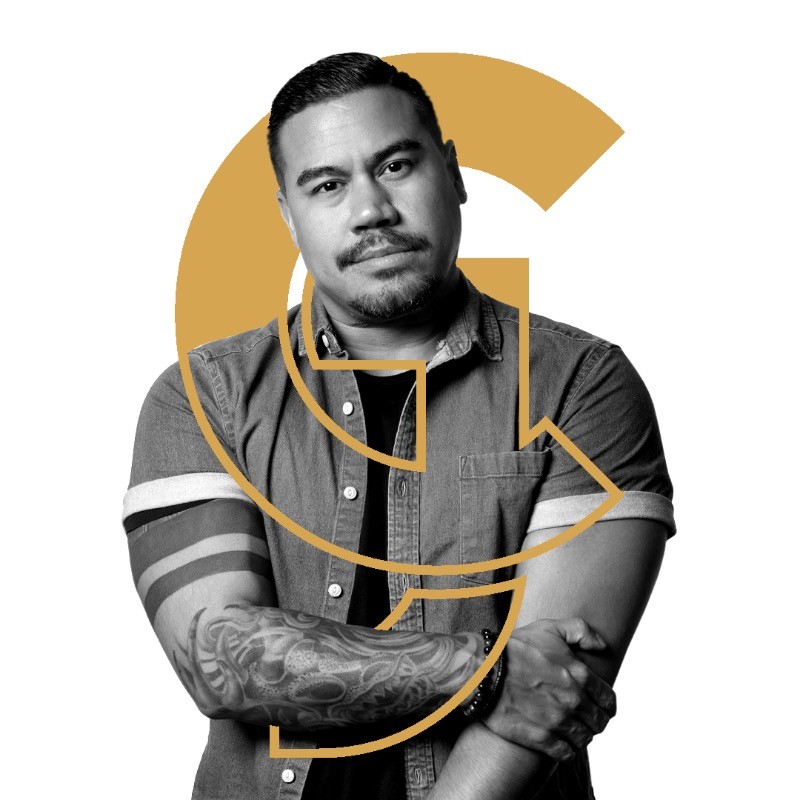Free UX Design Course
Dive into UX design with our free starter course. Transform your creative ideas into user-friendly solutions.
Next year will mark a decade of dating with swipe-based apps. Tinder alone has generated 55 billion matches since its 2012 launch, and according to a survey from wedding planning behemoth The Knot, the app matched 26% of newlyweds who met online.
The internet is littered with anecdotes from couples whose relationships began on an app, but it also brims with headlines like “How Swiping Ruined Online Dating” and “Online Dating Apps Are Actually Kind of a Disaster.” After nearly ten years of what Tinder calls “swipe life,” both sides of the aisle can agree that apps have significantly altered the landscape of modern dating. The question isn’t whether dating apps have changed the way we date—it’s how.
Meeting Your Match
Data shows a rising, secular trend of singles meeting through dating apps, observes Dr. Justin Garcia, an evolutionary biologist, and anthropologist who researches romantic and sexual relationships throughout the life course.
Since 2010, Garcia has served as a scientific advisor to Match. His work for the dating industry titan revolves primarily around the company’s annual Singles in America survey, which reveals a steady increase in online dating across demographics.
“Every year we survey over 5000 U.S. singles about their attitudes and behaviors around dating, relationships, singlehood, and use of technologies,” Garcia explains. “In last year’s data, over 40% of people met their first state through an app or a website. Only 6% met at a bar—and this was before COVID,” he adds. “The data tells us year after year … on average, people are meeting more through these technologies.”
Today, Match Group owns many of the dating platforms through which American singles meet. The company emerged as a pioneer of internet courtship when Match.com went live on the web in April 1995.
“We were the first to launch digital, curated matches,” proclaims Dushyant Saraph, Chief Product and Revenue Officer at Match Group. “We began with a simple profile and open search feature and believe it or not, we would actually snail mail you matches.”
Match and other legacy platforms like eHarmony and OkCupid hummed along as desktop-oriented websites until 2007, when iPhones forced digital products to go mobile. Match launched its first native iPhone application in 2009.
“With our first mobile app, MatchMobile, mobile products were about adapting and fitting our desktop product onto a phone screen, which was extremely hard to do,” explains Saraph. “We aimed to keep the features members knew and loved from the desktop experience, and just re-worked them for a mobile device.”
Match and other dot-com era incumbents dominated the dating industry until 2012 when everything changed with a swipe.

The Power of Fun and Games
Tinder emerged in 2012 from an incubator started by IAC, Match’s then-parent company. It became the most popular dating app shortly after its launch, using disruptive design features to capture a vast but hitherto untapped market of young adult users.
Tinder dumped its predecessors’ bloated bios and protracted questionnaires for something more streamlined, capping bios at 500 characters and introducing a hyper-visual user interface. The photo that users swipe on occupies 80% of the screen.
“Tinder was the first mobile-first dating product to take off,” explains Saraph, “and it changed the game in terms of what singles expected from a dating app—a simple UI that felt fun.” While a bright color palette, whimsical animations, and an emphasis on visual information make the app entertaining and easy to use, Tinder’s ‘fun’ factor runs deeper by design. “We always saw Tinder, the interface, as a game,” the app’s co-founder and former CEO Sean Rad told Time in 2015.
On Tinder, the name of the game is swiping. A swipe right indicates interest in another user—a swipe left, the opposite. A reciprocated swipe right creates a match, opening up the opportunity for mutual admirers to message on the app.
But according to Rad, “[i]t doesn’t even matter if you match because swiping is so fun.”
The irresistibility of the swipe lies in instant gratification, explains Rafal Jankos, a Springboard mentor and UX consultant whose recent UX research for Vodafone UK investigated the design features that make dating apps so engaging.
“You’re presented with a shot of dopamine every single time you see a new person and choose whether you like [them] or not,” Jankos continues. “The success [of the swipe] is heavily based on the interaction and what it does to our brains … you have kind of an Instagram approach on steroids with making choices.”
Emotional engagement is exacerbated, Jankos adds, “by the fact that not only do you like or want something, you also need it—because you have a problem.” The problem in question is, of course, singlehood.
In his research, Jankos also observed that the physical act of swiping “yes” or “no” gives users a sense of control—a hallmark of effective UX design. The swipe also delivers on another key usability heuristic: it delivers a match between the app’s system and the real world.
“That’s really the beauty of the swipe,” says Dr. Jess Carbino, a former sociologist for Tinder and Bumble.
“The gamification actually mirrors the process by which we psychologically evaluate people,” she elaborates. “When we are interested in evaluating somebody—anybody—walking down the street, whether it’s romantic or not, we’re engaging in a psychological process called thin slicing, whereby we are able to take small amounts of information about somebody and form an impression.”
Thin slicing works, Carbino notes, because these impressions tend to be stable, long-lasting, and accurate.
“The gamification of it is fun,” she clarifies, “but it is fun because it is mimicking what we actually are doing in our brains. It’s mirroring the process … by which we are evaluating people, places, and things in our daily lives.”

Don’t Hate the Player
Swiping is an example of gamification, a common UX technique employed to incentivize users to achieve goals and keep using a product. Gamification injects elements of gameplay like points, badges, and other rewards into non-gaming environments to boost user engagement.
“Gamification keeps people from getting bored,” explains Springboard mentor and veteran UX architect James Young.
Young’s experience with online dating platforms spans more than two decades. Before developing user personas for rural romance ringleader FarmersOnly, Young worked on UX design for FriendFinder, the dating site through which he eventually met his wife.
“When I was at Friendfinder, I don’t think gamification had been coined as a phrase yet,” Young recalls. Nevertheless, organically gamified features were driving user behavior on the site.
In the early days of FriendFinder, Young says, highly-browsed profiles would land on the site’s front page. Frontpage status meant more profile views, and Young remembers users creating fake accounts to browse their own profiles in order to accumulate enough views to snag a slice of the site’s coveted real estate.
Get To Know Other Design Students
Trixy Woodhouse
UX Designer at Nike
CJ Hernandez
Senior Designer at StellarFi
Aisha Butt
UX Associate at Meta
“We recognized pretty quickly that this mattered to people—how many people were looking at their pictures, how many emails they were getting, how often they were responding.”
In response, Young and the FriendFinder UX team added official rewards to encourage engagement.
“If you responded to an email within 30 minutes, you got a star. More stars showed that you were very active. And if you’re active, then you’re going to get more people trying to talk to you because it’s likely you’re going to respond back.”
Tinder’s gamification is driven by variable ratio reinforcement schedules—the same mechanism that hooks gamblers on slot machines. Instead of rewarding every repetition of a target behavior, variable ratio reinforcement schedules reward a target behavior inconsistently. Unpredictable rewards result in compulsive repetition of the target behavior, which also remains persistent over time—even after the rewards stop.
In HBO’s 2018 documentary, Swiped: Hooking Up In the Digital Age, Tinder’s co-founder and CSO Jonathan Badeen spoke with unabashed transparency about how the app uses variable ratio reinforcement schedules to keep users swiping.
“Having unpredictable yet frequent rewards is the best way to motivate somebody to keep moving forward,” Badeen tells the camera. “It kind of works like a slot machine … You’re excited to see who the next person is. Or hopefully, you’re even excited to see, ‘Did I get the match?’ And get that ‘It’s a Match’ screen. That’s a nice little rush.”
Ellen Kaufman, a doctoral student whose current work focuses on how intimacy is engineered in technology-mediated contexts, thinks that a nice little rush might actually disincentivize intimacy-building.
“The largest issues in terms of how these technologies are changing dating,” says Kaufman, “have to do with things like gamifying dating.”
While Kaufman acknowledges that gamification can be a compelling way to make behaviors stick, she posits that it might reinforce behaviors that contradict dating goals.
“Intimacy is fostered through extended conversation,” she explains. “It’s about keeping the conversation going and not providing people with distractions. The swiping aspect of dating apps takes away from [that].”
According to Kaufman, the disruptions inherent to Tinder’s gamified UX can trip up intimacy-building discussions even once users have matched and started to chat.
“If you’re having a great conversation with one person who you’ve matched with and then you get a little notification that comes down and says, ‘Congratulations! You have another match!’ Are you going to keep having this conversation? Or are you going to go see who the person you matched with is? Are you going to send them a message and say hi?” Kaufman asks. “By the time you’ve done that, you’ve left this [first] person on read.”
In the physical world, Kaufman says, this experience might look like having a really engrossing conversation on a date—until someone interjects and talks to your date for 15 minutes. Once the interruptor leaves, the conversation has been completely disrupted. This discourages the intimacy-building needed to progress a relationship.
“If my goal on a dating app is to find a partner,” Kaufman suggests, “maybe that dopamine rush is counterintuitive to doing that.”
Playing for Keeps
Beyond Tinder, a push exists to separate gamification and dating. In his comment for this article, Saraph distanced Match from its more gamified peers—and like Kaufman, stressed the value of conversation as an intimacy-building tool.
“We want our product to feel more like a beloved service rather than a game or transaction,” Saraph emphasized. “Our product has to work so the conversation can flow effortlessly forward and help singles get to the good stuff—more butterflies, more good conversations, and better dates.”
Hinge—a relationship-focused app—both decries and vows to combat the ills of gamified dating in a 36-point font mission statement on its website.
“In today’s digital world,” the missive howls, “singles are so busy matching that they’re not actually connecting, in person, where it counts. Hinge is on a mission to change that.”
After rebranding as “an app that’s designed to be deleted,” Hinge replaced swiping with vertically scrollable profiles that feature a mix of photos and prompts. Users can interact with each other’s profiles by liking or commenting on specific content, which according to Hinge, makes it easier to start a conversation.
In an effort to “make meaningful matches,” Hinge says, free members are limited to sending 10 likes per day—“because when you’re thoughtful about who you like, matches mean more.”
Hinge also introduced a feature called Most Compatible, which uses an algorithm to match users based on the types of likes they send and receive overtime. Hinge strives to send users one Most Compatible suggestion per day.
“This is what matchmakers do,” says Garcia. “Particularly successful matchmakers. They will say, ‘I’m setting you up with three dates and these are the three people you’re going to really focus on.’ I think that’s smart. That’s based on what we know about the cognitive psychology of decision-making. It gets you to focus in a little bit more.”
While Tinder product designers have claimed that the app makes dating easier by providing users with a dating pool of infinite options, Garcia disagrees from a biological standpoint.
“Those endless opportunities are both exciting and very difficult for our brains to process,” Garcia explains. “People who are given more options are less satisfied with their choice later in dating.”
Likewise, Kaufman observes that dating app users who are constantly bombarded with new options face a tyranny of choice that clouds cues to step away from the table. According to Garcia, that confusion could look like starting to date someone but not fully committing because another 3000 potential partners await on an app.
“We can get in this mindset that there’s an unlimited resource,” he explains, “and do damage to our own dating agenda because we don’t invest in the people that we’re getting to know. We don’t spend the time on trying to cultivate a relationship.”

Is It the Apps, Or Is It Us?
Overarchingly negative media reception has plagued Tinder since the app’s early days.
One viral critique—a 2015 Vanity Fair article entitled “‘Tinder and the Dawn of the ‘Dating Apocalypse’”—triggered a Twitter rant blasting author Nancy Jo Sales from the company’s official account.
Sales—a now-prominent anti-dating app evangelist—used the piece to argue that “romance gets swiped from the screen” on dating apps, which are designed to facilitate interpersonal disposability. Amongst other anecdotes, Sales detailed the swipe-scapades of a millennial Manhattanite banker who compares finding women on dating apps to ordering Seamless—“except it’s a person.”
According to Kaufman, certain aspects of the technology do bolster issues surrounding hookup culture—but these exacerbatory features aren’t exclusively specific to dating.
“It’s a larger issue around tech norms that allows us to essentially ghost somebody,” explains Kaufman, “because your odds of running into them in person are incredibly low. There’s a lack of community accountability. Nobody’s going to hold you accountable for behavior that might have been considered incredibly rude 30 years ago when you might see this person all the time.”
Garcia also posits that dating apps offer a shield of anonymity that emboldens users to behave in ways that they might not at work or in a store—which could contribute to the proliferation of misogyny and racism on dating apps.
“There is misogyny on these apps, there is racism on these apps,” Garcia affirms. “But that’s everywhere on the Internet, right? It’s so widespread in a societal context,” he explains. “If you hold racist attitudes or misogynistic attitudes, they’re going to impact your dating, whether or not you do it on an app or pick someone up at a bar. They’re part of larger patterns.”

The Big Why
On the heels of the Vanity Fair polemic, dating app discourse on outlets from NPR to Bustle and Psychology Today pivoted to a new theme—user burnout.
“The Rise of Dating App Fatigue,” a popular Atlantic article from 2016, gently rebuked concerns about app-induced dating dystopias in favor of a more temperate exploration of the perceived decline in user satisfaction across dating apps. After investigating the intersection of dating apps and broader social phenomena like hookup culture and widespread preoccupation with productivity, the article concluded that dating has become “another way that modern life can make people feel overworked.”
In its attention to dating burnout, the article was on to something—nearly half of U.S. adults report that dating has grown harder over the last ten years. But outside of the introduction of swipe-based apps, what other seismic shift in dating could have triggered this newfound exhaustion?
According to Garcia, America is in the midst of an extraordinary demographic shift.
“We have more single adults in the United States today than almost any other developed nation. This is historically totally unprecedented—to have well over a third of an adult population single at any given time. ”
This change has also manifested quite rapidly from an evolutionary standpoint, he adds.
“Just a few decades ago, people were marrying at much younger ages. As recently as the 1950s and 1960s, more than half of people were married by their early 20’s or by age 20.”
Now, Garcia would be shocked if five out of 300 students in his Gender Studies lecture were married.
This could mean that younger generations are experiencing more relationships—and more breakups—than their predecessors, Garcia hypothesizes.
“We’re doing more dating before we pick the prince or the princess,” he says, “and that can come with its own baggage.”
A person who has endured five breakups, Garcia clarifies, might be carrying some little ‘t’ trauma. Unlike capital ‘T’ or PTSD trauma, which the DSM-5 describes as situations that threaten life or bodily integrity, little ‘t’ trauma is triggered by smaller dysregulating events that surpass or disrupt an individual’s ability to cope or function emotionally.
“So then when you’re trying to look for a serious relationship,” Garcia explains, “you’re going to be skittish about certain things.”
This response is not only human but also advantageous from a biological perspective, he adds.
“People should modify their behavior based on their experience. That’s how biologists define learning—a relative change in behavior due to experience. And I think that’s part of the complex story we’re all rolling around in.”

Meeting a New Need
If the core goal of UX design is to create products and experiences that offer creative solutions to user problems, dating apps arrived right on time.
For further reading, check out here what UX designers do.
“These apps were developed to respond to a problem we were facing,” says Garcia. “And that challenge was more people moving in and out of relationships across the life course.”
According to Carbino, dating apps also materialized in reaction to another issue: the breakdown of institutions where people used to meet. Historically, she explains, couples were introduced through educational institutions, religious institutions, and social contacts—but the relevance of these social arbiters has diminished due to broader societal changes.
“Religious attendance and observance have declined dramatically over the 20th century,” Carbino points out. “And people are much less likely to live close to friends, family, social connections and the places where they grew up.”
Dating apps are also exceptionally adept at meeting users when they need it, Young points out.
“Whether it’s ‘I need that human touch,’ or ‘I just need to talk to somebody I don’t know,’ that’s what Tinder really excels at,” he says.
“The most important thing you can do as an application is to be there when the user needs you. If you have one good experience out of 15 poor ones, it doesn’t matter. The only thing that matters is that you have one good experience—and that will bring you back over and over.”
Since you’re here
If you want to work in design, you can. It’s that simple. With our UX Bootcamp, we’ll help you launch your design career in 9 months or less. Browse our free UX salary guide to see what you could be making







